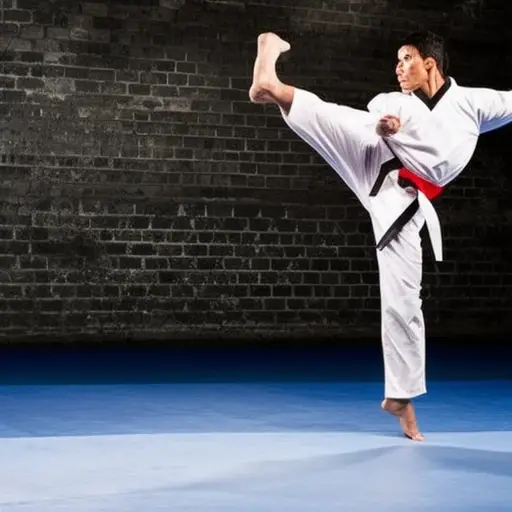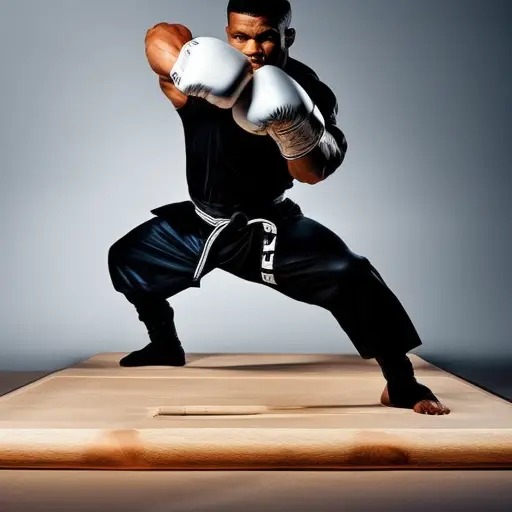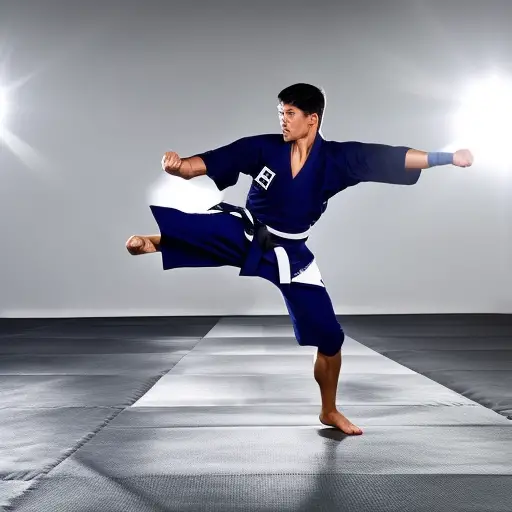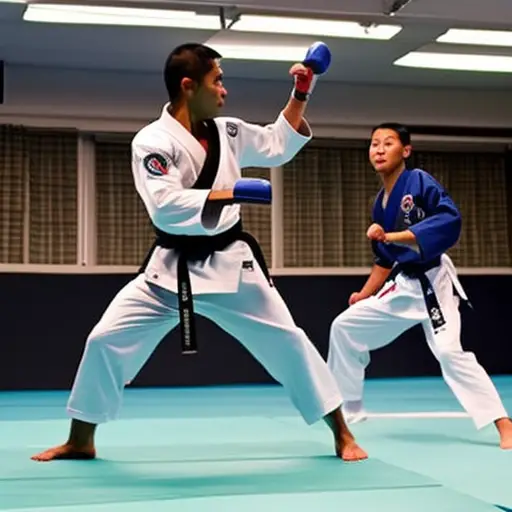Strategies for Overcoming Plateaus in Taekwondo

Plateaus in taekwondo can be frustrating and discouraging for practitioners striving for continuous improvement. Like a formidable opponent, these plateaus can test one’s resolve and commitment to the martial art.
However, with the right strategies and mindset, these obstacles can be overcome. In this article, we will explore various effective strategies for breaking through plateaus in taekwondo.
By implementing these techniques, practitioners can regain their momentum, unlock their full potential, and elevate their skills to new heights.
Identifying and Analyzing Your Plateau
During the process of identifying and analyzing your plateau in Taekwondo, it is essential to thoroughly examine your progress and performance over a specific period of time. This step is crucial in order to gain a comprehensive understanding of the limitations that have led to stagnation in your training. By analyzing your limitations, you can identify the areas where you are struggling and devise strategies to overcome them.
To begin, it is important to assess your technical skills, such as kicks, punches, and blocks. Evaluate your execution, power, and accuracy in each technique. Look for any patterns or inconsistencies that may be hindering your progress. Additionally, consider your physical fitness level, including strength, flexibility, and endurance. Identify any weaknesses that may be impacting your overall performance.
Furthermore, it is crucial to examine your mental and emotional state during training. Assess your focus, determination, and mindset. Are there any mental or emotional barriers that are preventing you from reaching your full potential? Identifying and addressing these obstacles is key to overcoming stagnation.
Once you have thoroughly analyzed your limitations, it is time to devise a plan to overcome them. Set specific, measurable goals that target your weaknesses. Create a training regimen that focuses on improving these areas. Seek guidance from a qualified instructor or coach who can provide expert advice and support.
Setting SMART Goals for Progression
In order to make continuous progress in Taekwondo, it is important to set SMART goals that are specific, measurable, achievable, realistic, and time-bound. Goal setting techniques play a crucial role in helping practitioners overcome plateaus and reach new levels of skill and performance. Here are three key reasons why setting SMART goals is essential in Taekwondo:
-
Clarity and Focus: Setting specific goals provides clarity and focus on what needs to be achieved. Instead of having vague aspirations, setting goals that are specific allows practitioners to define exactly what they want to accomplish. For example, instead of setting a goal to ‘improve kicks,’ a specific goal could be to ‘increase the height of roundhouse kicks by 10 centimeters within three months.’
-
Measuring Progress: Measurable goals enable practitioners to track their progress objectively. By setting benchmarks and milestones, it becomes easier to assess whether progress is being made. Measuring progress provides motivation and a sense of accomplishment, as practitioners can see how far they have come and identify areas that require further improvement.
-
Accountability and Time Management: Setting achievable and time-bound goals ensures that practitioners stay accountable and manage their time effectively. With a clear timeline in place, practitioners can allocate resources and prioritize their training activities accordingly. This helps in avoiding procrastination and staying on track towards achieving the set goals.
Engaging in Cross-Training Activities
Engaging in cross-training activities allows Taekwondo practitioners to diversify their training regimen and enhance their overall physical fitness. Cross training involves participating in different exercises and activities that complement and support the main sport, in this case, Taekwondo. There are several benefits of cross training for Taekwondo improvement.
Firstly, cross training helps prevent overuse injuries by reducing the repetitive strain on specific muscles and joints. By engaging in activities such as swimming, cycling, or weightlifting, practitioners can strengthen different muscle groups and improve overall muscular balance.
Secondly, cross training enhances cardiovascular fitness. Activities like running, HIIT workouts, or aerobic classes can improve endurance, stamina, and lung capacity, which are crucial for performing well in Taekwondo.
Furthermore, cross training can improve flexibility, agility, and coordination. Activities like yoga, Pilates, or gymnastics can help increase range of motion, body control, and balance, all of which are essential for executing Taekwondo techniques with precision and accuracy.
Incorporating cross training exercises into a Taekwondo training routine can also provide mental stimulation and prevent boredom. Trying different activities challenges the mind and keeps the training experience fresh and exciting.
Incorporating Variation Into Your Training Routine
To ensure continued progress and break through plateaus, it is important to introduce new exercises and techniques while also including different training methods in your Taekwondo routine. By incorporating variation into your training routine, you can challenge your body in new ways, prevent boredom, and keep your motivation high.
Here are three ways to incorporate variation into your Taekwondo training:
-
Vary your exercises: Instead of sticking to the same basic kicks and punches, try incorporating different variations and combinations. This will not only keep your training interesting but also help you develop new skills and improve your overall technique.
-
Mix up your training methods: Explore different training methods such as circuit training, plyometrics, or interval training. These methods can help improve your strength, speed, and endurance, and also keep your workouts fresh and exciting.
-
Importance of rest and recovery: While incorporating variety into your training routine is important, it is equally important to give your body enough time to rest and recover. Overtraining can lead to fatigue, injuries, and hinder your progress. Make sure to schedule rest days and include active recovery exercises such as stretching or yoga to help your body recover and prevent burnout.
Seeking Guidance From a Mentor or Coach
By regularly seeking guidance from a trusted mentor or coach, practitioners of Taekwondo can receive valuable insights and feedback to help them overcome plateaus and continue progressing in their training. Seeking guidance from a mentor or coach is crucial for finding motivation and building a support system.
Finding motivation is essential when facing a plateau in Taekwondo. A mentor or coach can provide the necessary encouragement and support to keep practitioners motivated during challenging times. They can help remind students of their goals and the reasons why they started their Taekwondo journey in the first place. A mentor or coach can also offer strategies to stay focused and committed, ensuring that the practitioner remains determined to overcome the plateau and achieve their desired outcome.
In addition to motivation, building a support system is equally important. A mentor or coach can provide a safe and supportive environment for practitioners to discuss their challenges and frustrations. They can offer guidance on how to navigate through difficult periods and provide valuable feedback on the practitioner’s techniques and skills. Furthermore, a mentor or coach can connect practitioners with other experienced individuals in the Taekwondo community, creating a network of like-minded individuals who can offer advice and encouragement.
Utilizing Visualization and Mental Imagery Techniques
When it comes to overcoming plateaus in Taekwondo, utilizing visualization and mental imagery techniques can be highly effective.
By visualizing successful techniques and scenarios in your mind, you can enhance your mental imagery and improve your overall performance.
This technique allows you to mentally rehearse and prepare for different situations, helping you to overcome challenges and reach new levels in your practice.
Effective Visualization Techniques
The incorporation of visualization and mental imagery techniques can significantly enhance the effectiveness of training and performance in Taekwondo. By utilizing these techniques, practitioners can improve their focus and enhance their skills through the power of imagination. Here are three effective visualization techniques that can be utilized in Taekwondo training:
-
Visualization exercises for improved focus: Visualizing specific techniques or scenarios allows athletes to mentally rehearse their movements and reactions, improving their focus and concentration during training and competitions.
-
Harnessing the power of imagination for skill enhancement: By vividly imagining perfect execution of techniques, athletes can enhance their muscle memory and refine their movements. This mental practice can help develop greater precision and fluidity in their Taekwondo skills.
-
Creating mental images of success: Visualizing successful performances and achieving goals can increase confidence and motivation. By regularly visualizing themselves achieving their desired outcomes, athletes can build a positive mindset and increase their chances of success in Taekwondo.
Enhancing Mental Imagery
Enhancing mental imagery through the utilization of visualization and mental imagery techniques can be a powerful tool in overcoming plateaus in Taekwondo.
Mental imagery, also known as visualization, involves creating vivid mental pictures of successful performances, techniques, and movements.
By enhancing focus and improving performance, mental imagery allows athletes to mentally rehearse their actions and strategies, ultimately leading to better execution in real-life situations.
When practicing mental imagery, athletes should focus on details such as body position, timing, and technique, creating a realistic and immersive experience.
This technique not only helps to maintain motivation during plateaus but also enhances confidence and reduces anxiety.
Embracing Mindfulness and Mind-Body Connection
Through the practice of Taekwondo, practitioners can cultivate a deeper sense of mindfulness and strengthen their mind-body connection. Mindfulness techniques and mind-body exercises are integral parts of Taekwondo training that allow individuals to enhance their focus, awareness, and overall performance. Here are three ways that embracing mindfulness and mind-body connection can help practitioners overcome plateaus in their Taekwondo practice:
-
Improved mental clarity and concentration:
Mindfulness techniques such as meditation and breathing exercises can help practitioners quiet their minds and enhance their ability to concentrate. By learning to be fully present in the moment, practitioners can eliminate distractions and improve their focus during training sessions, leading to better technique and performance. -
Increased body awareness and control:
Mind-body exercises, such as yoga and qigong, can help practitioners develop a heightened sense of body awareness and control. This increased awareness allows them to better understand their body’s movements, alignment, and limitations, enabling them to make adjustments and refine their techniques more effectively. -
Enhanced performance under pressure:
By cultivating a strong mind-body connection, practitioners can better manage stress and perform at their best even in high-pressure situations. Through mindfulness practices, individuals can develop the ability to stay calm, focused, and composed, allowing them to perform complex techniques with precision and efficiency, even in the face of adversity.
Tracking and Monitoring Your Progress
Effectively tracking and monitoring your progress is crucial for identifying areas of improvement and ensuring continuous growth in your Taekwondo practice. By diligently tracking your progress, you can gain valuable insights into your strengths and weaknesses. This allows you to focus your training efforts on areas that require improvement, ultimately leading to enhanced performance and skill development.
There are various methods you can use to track your progress in Taekwondo. One effective approach is keeping a training journal. In your journal, record the techniques you have learned, the drills you have practiced, and any feedback or observations from your instructors. This will enable you to review your progress over time and identify any patterns or trends in your performance.
Additionally, tracking your progress can be done through regular assessments and testing. Set specific goals for yourself and periodically evaluate your performance against these objectives. This can involve measuring your speed, accuracy, flexibility, or any other relevant factors. By monitoring your improvement, you can measure your progress and stay motivated on your Taekwondo journey.
Remember that tracking progress and monitoring improvement go hand in hand. It is not enough to simply record your achievements; you must also analyze and reflect on your performance. This will help you identify areas that require further attention and allow you to adjust your training plan accordingly.
Frequently Asked Questions
How Long Does It Typically Take to Overcome a Plateau in Taekwondo?
Overcoming plateaus in Taekwondo can vary in duration depending on individual factors such as skill level, dedication, and training intensity. Effective strategies and common obstacles play a crucial role in determining the time it takes to overcome a plateau.
Are There Any Specific Exercises or Drills That Can Help Break Through a Plateau in Taekwondo?
Specific exercises, drills, and mental techniques can help break through plateaus in Taekwondo. Visualization, self-reflection, goal setting, self-correction, and self-evaluation are essential. Also, breaking bad habits, building strength and flexibility, speed and agility training, and sparring drills and simulations are effective strategies.
Is It Possible to Overcome a Plateau in Taekwondo Without Seeking Guidance From a Mentor or Coach?
Overcoming a plateau in Taekwondo without seeking guidance from a mentor or coach is possible but may be challenging. Mentorship provides valuable expertise, personalized feedback, and motivation, which can accelerate progress and help navigate obstacles effectively.
How Important Is It to Track and Monitor Progress When Trying to Overcome a Plateau in Taekwondo?
Tracking and monitoring progress is crucial in overcoming plateaus in Taekwondo. It allows for goal setting and provides a clear understanding of one’s strengths and weaknesses, facilitating targeted improvements through self-reflection and adjustment of training strategies.
Can Incorporating Variation Into My Training Routine Alone Help Me Overcome a Plateau in Taekwondo, or Are Other Strategies Necessary as Well?
Incorporating variation into your training routine can be beneficial for overcoming plateaus in Taekwondo. However, it is important to recognize that other strategies, such as seeking professional guidance, may also be necessary for optimal results.
Conclusion
In conclusion, by implementing strategies such as setting SMART goals, engaging in cross-training activities, incorporating variation into training routines, and seeking guidance from mentors or coaches, individuals can effectively overcome plateaus in Taekwondo.
Additionally, utilizing visualization and mental imagery techniques, embracing mindfulness and mind-body connection, and tracking progress are also valuable strategies to break through plateaus.
Some may argue that plateaus are inevitable and cannot be overcome, but these strategies provide proven methods to continuously progress and improve in this martial art.





